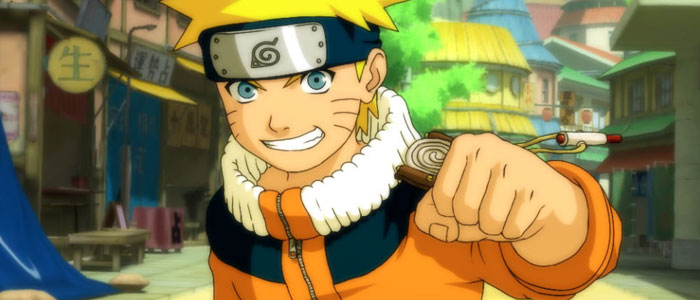Same old flip and kick.
Sony’s portable system has become the unofficial home of fighting games on the go. From classics such as Darkstalkers and Street Fighter to more modern iterations of Tekken and Mortal Kombat anyone interested in the genre need look no further than the PSP. Namco Bandai games have been good to the Naruto franchise. Pumping out some very solid fighting games over the past few years and while the PS2 has gotten the majority of the love Ultimate Ninja Heroes 2 brings the series back for an encore on a portable. Dubbed The Phantom Fortress this follow-up is actually just a revamped version of last year’s Ultimate Ninja Heroes, but even if you picked up that version there is enough here to warrant a second look; granted you are a fan of the casual style of the game itself.
The simple game mechanics may be Phantom Fortress’ biggest asset. Anyone who played the original game knows what to expect, but for those of you who didn’t let me break it down a bit for you. Much like Nintendo’s informal button masher Smash Bros. The Phantom Fortress focuses mostly on flashy attacks and items as opposed to complex button presses. Don’t be fooled though, the game does have a competitive vibe under the surface. The expansive levels lend themselves well to environmental control and learning the correct timing for attacks is crucial to victory.
It may be hard to convince fighting aficionados of the depth of this game for one simple reason; every attack is mapped to just one button. That is right everything you achieve in the game is dependant on pressing the circle button. There are combos and special moves that require you to implement various directional inputs and button presses, but if you so choose you can play the game entirely by pressing one button. Either way you slice it the game offers rewards for those willing to invest time and a good old-fashioned button-mashing romp for those looking for a quick fix. Most games can claim to appeal to a hardcore and casual audience simultaneously, but most fail. Phantom Fortress does a nice job of balancing both audiences with decent results.
If the one-on-one fighting were all to be had Phantom Fortress would have a hard time distinguishing itself from the original game. Thankfully with the sequel the team has added a story mode to help round out the package. This story section is called Mugenjo Mode and finds Naruto and his band of friends traversing around the Phantom Fortress to discover why this murky real estate is sucking the vitality out of all the residents of Hidden Leaf Village. Although this mode is certainly substantial it suffers from a few pitfalls that do not help in its appeal.
Mugenjo Mode consists of 100 various floors chock full of different tasks for the player to complete. There are few different flavors of action found here including battles, mini-games and even trivia. The cool part is that you get to decide what type of event you want based on which scroll you use for each room. This does break down the monotony some, but with 100 rooms and only a few types of gameplay it can grow stale very quickly. The incentive to completing this mode is that you gain Ninja Points for each completed task that can be used to unlock special features such as music tracks and character art.
Outside of single-player Phantom Fortress also offers a decent multi-player diversion. Battles are handled in the traditional on-on-one style or in combinations of team battles such as 2 vs. 2 or 3 vs. 3 and can be played wirelessly if you know someone else with the game. The best part about multi-player is by far the lobby system which can drop as many as 16 players into a room as they rotate matches. Of course seeing as you rarely find 16 people playing the same game in the same room this feature almost feels useless. Game sharing is available but as always with a catch. You can only battle on one particular stage and the loading times are downright atrocious. A lack of true online mode hurts more than it helps and as fun as it is finding others with the game in a local environment may prove challenging.
Visually the game is a color explosion and looks fantastic on the PSP’s slick widescreen display. Fans of the show will appreciate the cel-shaded design however, if you have seen any of the past Naruto games not much has changed. The portable outing sports lower polygon counts, but still manages to remain stylish without sacrificing frame rate. Special moves look fantastic and the levels themselves are designed with fan service in mind. Needless to say fans of the anime will be pleased at what is here, just don’t expect miracles from your portable PlayStation.
Naruto Ultimate Ninja Heroes 2: The Phantom Fortress is a prime of example of if it isn’t broken, don’t fix it. The game bears a striking resemblance to the previous outing with only minor additions to keep fans happy. If you are a die-hard fan of the anime I can say with confidence there is plenty here to appease you, however if you desire a more robust fighting game you may want to look elsewhere. Perhaps with the next outing we can see the series truly advance to its full potential complete with online play and a larger roster of characters. As it stands Phantom Fortress is just good enough to earn a recommendation to fans of the series.
